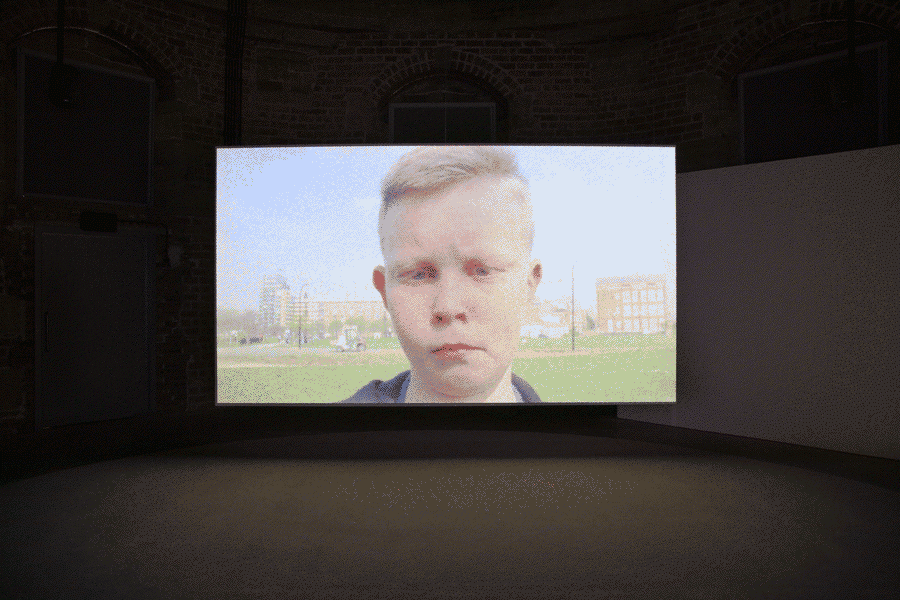I just wrote ‘change’ but meant to write ‘chance’. That’s because I’m watching the film F for Fibonacci (2014) on a small monitor and the narrator intoned something intriguing about chance being the most complex form of serialism. But the newly commissioned Solo for Rich Man (2015) projects large over my shoulder, and the magnified sound of coins thrashing about on a tabletop washes out my thoughts. By far the loudest message of Crippled Symmetries is that capitalism pervades.
“George, have you ever heard of George Maciunas?” asks composer Anton Lukoszevieze at the beginning of Solo for Rich Man. George, an eleven-year-old boy, is next asked if he can say Ma-ci-u-nas. Then the two play the eponymous 1962 composition, which involves ’shaking coins, dropping coins, striking coins, wrinkling paper money, fast ripping of paper money, slow ripping of paper’, etc. It is one of five compositions throughout the piece, with two other Fluxus works and two composed by Lukoszevieze. Some of the scenes take place in an East London adventure playground with other children milling around. Gibson is influenced by radical educators and composers Brian Dennis and John Paynter, who tried to import the ideas of John Cage and others into school curricula. George is asked to repeat words from our current economic lexicon: “austerity”, “bankster”, “capitalism”, “cost–benefit analysis”. He hijacks this task to prove his ability to be irksome, licking ice cream and putting on a range of strained voices.
F for Fibonacci largely takes place in a virtual world created in Minecraft. Gibson commissioned eleven-year-old Clay Barnard Chodzko to create an office space for the child’s own fictional character, Mr Money, an LA-born superhero with a spurious Japanese accent. Exploring the office, which includes a mile-high luminous parkour apparatus, chicken ranch and wild railway system, Gibson gently asks questions while allowing Chodzko to lead a somewhat tumultuous tour. Cut scenes – Karlheinz Stockhausen / drips of ink in water / a boy wearing a grotesque latex ‘old man’ mask and hanging out in a slick office space – intersect, alongside a narrative weaving together observations about Cage’s musical revolution and remarks on the vicissitudes of the marketplace. One line from an apparent stockbroker sticks out among this fractured assemblage: “Noise is what keeps our observations imperfect.”
I briefly consider if Gibson is at fault for leading situations that imply the omnipresence of a capitalist paradigm, whether in the open sandbox of Minecraft or the hallowed space of the playground. But both films delve into the space created by William Gaddis’s book JR (1975), a story of the eponymous JR Vansant, an eleven-year-old schoolboy who builds a formidable financial empire using his music teacher as a front. And this not only unlocks Gibson’s potent motif of boys gleefully playing capitalism, but significantly introduces Gaddis’s more general concern with what he felt was the linguistic, and by extension artistic, breakdown fostered by capitalism. With this, the impact of the project becomes clearer: Fluxus and idealistic pedagogies are repositioned. Not often do you wish Stockhausen would just shut the fuck up so you can string a few thoughts together – but here you do. In an anxious moment, you recognise that the music of the most prized avant-gardes is no longer audible over the noise of our contemporary world; a powerful metaphor for the deep changes that have taken place.
This article was first published in the October 2015 issue.
